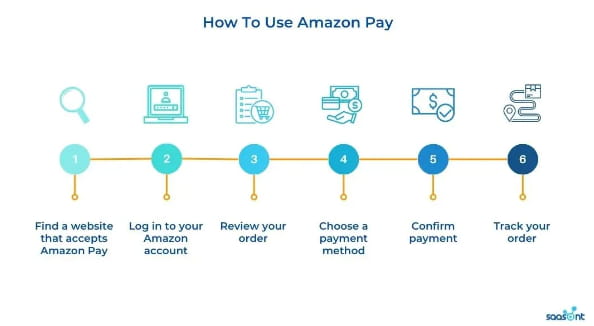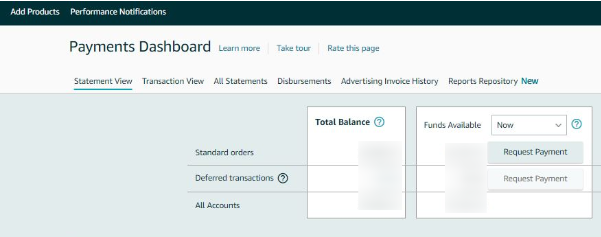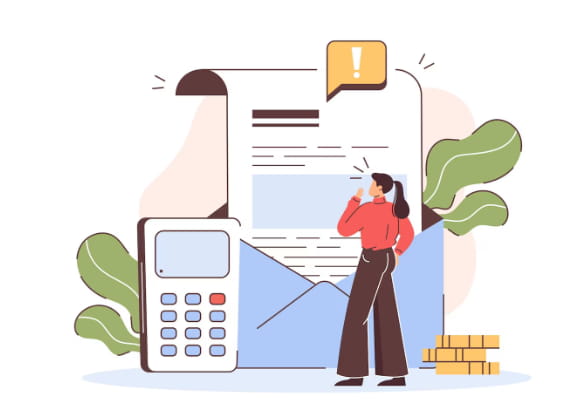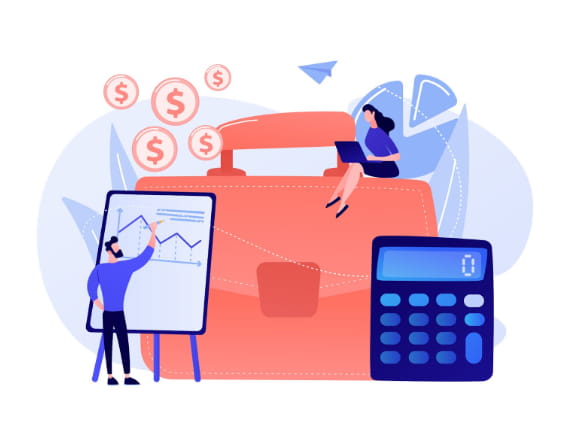Amazon’s payment system works differently for employees and sellers, and it’s important to know which applies to you. Most Amazon workers, including Flex drivers, warehouse staff, and seasonal employees, are paid weekly. On the other hand, Amazon sellers follow a biweekly payment cycle, with a standard 14-day schedule.
For employees, weekly paychecks often land on Fridays or early in the week, and some roles even have “Anytime Pay” for instant access to earnings. Sellers, however, need to wait through a 7-day holding period after delivery before their earnings are released in the next payout.
In this guide, we’ll break down how Amazon pay works for workers and sellers in 2025, explain options like Express Payout for faster access, and cover the latest policy changes that affect when and how you get paid.
Who Gets Paid Weekly At Amazon In 2025?
Most Amazon Employees receive weekly pay, especially those working in delivery and warehouse operations.
1. Flex Drivers
Amazon Flex drivers are paid weekly through direct deposit, usually on Tuesdays or Fridays. This depends on where they’re working. The exact weekday can vary by region, but all Flex drivers receive one payment per week.

In some areas, Amazon also offers an “Instant Pay” (or Anytime Pay) feature. This lets Flex drivers who have an Amazon Flex Debit Card cash out their earnings right away, instead of waiting for the regular deposit. This service has no extra fees.
Your weekly payment includes the base delivery rate and any customer tips. Tips are added to your total and paid out with your weekly paycheck.
2. Warehouse & Fulfillment Center Workers
Most of the full-time and seasonal warehouse employees get paid every Friday. This is a standard schedule across most of Amazon’s fulfillment centers in the U.S.

Along with your base hourly pay, your weekly check will also include any extra compensation like overtime and shift differentials. Additional pay is added for any night and weekend shifts in your weekly paychecks
Amazon recently increased the average hourly pay for U.S. fulfillment and transportation workers to over $23/hour. Additionally, Amazon introduced lower-cost health plans, making overall compensation more competitive.
Some locations also offer “Anytime Pay,” allowing employees to withdraw part of their earnings before payday.
3. Temporary & Seasonal Employees
On times like Prime Day sales or the holiday season, Amazon hires many temporary or seasonal workers to meet the high demand, and they are paid weekly, too.
These paychecks can include special bonuses or surge pay offered during busy periods. Through the weekly pay schedule, Amazon can quickly onboard or even retain short-term staff in times when they are needed the most.
How Often Will Amazon Pay You As A Seller In 2025?
If you’re an Amazon seller, your payment schedule will look quite different. Amazon uses a 14-day payout cycle.
1. Average Amazon Seller Payment Cycle
Amazon Sellers are paid every 14 days. However, there’s a compulsory hold of 7 days after a product is delivered before that payment becomes available.
This is the correct flow of it:

1. A customer places an order
2. You ship the item
3. The customer receives it
4. A 7-day holding period starts
5. The funds are included in your next biweekly payout
6. Money is deposited into your bank account
Depending on when the sale was made and paid for in the payout cycle, the waiting period between that sale and the money received in your account can stretch from 14 to 21 days.
Whether you’re new to selling on Amazon or already managing a successful storefront, having the right data-driven tools can make a big difference in your growth. Using SmartScout for sellers can help identify profitable products, track competitors, and uncover untapped niches. With its powerful insights and intuitive dashboard, SmartScout simplifies decision-making for both beginner and experienced Amazon entrepreneurs.
2. Where Can I Find My Amazon Payment Schedule?
You can see your Amazon payment schedule anytime by logging into your Seller Central account and checking the “payment reports” section. Your next payout date and any pending payments can be found in this dashboard.

It also lists your full payment history and shows any delays or holds that might affect you when you get paid.
3. Express Payout For Daily Payments
Amazon’s Express Payout feature is now available in both the U.S. and the UK. It allows eligible sellers to get daily deposits straight to a Visa debit card. If payouts exceed $50,000, the funds are automatically transferred to your bank account.
To enable it:
- Log in to Seller Central and open Account Info
- Turn on Amazon Balance in your payment settings
- Connect your bank account using Plaid
- Complete the required identity verification
- Start requesting payouts from your balance daily
With Express Payout, you can get access to your earnings within 24 hours of your request, a great option if you need quicker cash flow.
Although if you’re new, here is a Reddit post that might interest you about express payouts:
How To Get Paid Faster On Amazon? (Sellers Only)
If you’re a seller looking to speed up payments, there are two main ways to do it.
1. Use Express Payout
The fastest method is to activate Express Payout. Once you’ve enabled Amazon Balance and connected your bank account, you can start requesting daily payouts instead of waiting two weeks.
As long as you have the money in your available funds, you can request a payout at any time. It generally takes about 24 hours for the money to hit your bank account.
2. Maintain Account Health
How healthy your seller account is can directly impact your payment timing. If your account has issues — like policy violations or poor performance — Amazon may delay your payments.
Here are some tips to stay in good standing:
- Ship orders on time and always provide tracking
- Answer customer messages within 24 hours
- Keep returns below 10% by setting clear expectations
- Regularly check your performance metrics in Seller Central
- Address complaints quickly and professionally
Most payment delays happen because of high return rates, late shipping, or poor customer support. Keeping your metrics in check ensures smoother, timely payments.
What Are The Amazon Policy Changes For 2025? (Sellers Only)
Amazon rolled out some updates to its seller payment policies for 2025. All sellers must now verify their bank accounts using Plaid, adding another layer of payment security.
New sellers are also subject to a 30-day hold on their first payouts. This gives Amazon time to confirm account legitimacy and reduce fraud.

On the bright side, Express Payout is now easier to set up and is being offered to more established sellers. The process is quicker, and access is more widely available.
How Much Does An Average Amazon Employee Make Per Month?
The pay of an Amazon employee can vary depending on the location and role in the company.
- Flex Drivers: Earn around $18–$25/hour (gross), resulting in $2,000–$3,500 monthly if working regularly. However, after expenses, net take-home often falls closer to $10–$20/hour. Some can use “Anytime Pay” for instant access to earnings, according to Amazon.com.

- Warehouse Employees: Average over $23/hour, leading to roughly $3,500–$4,000 monthly for full-time work (before taxes/overtime). Seasonal workers earn similar hourly rates but less overall due to fewer hours.
- Amazon Sellers: Earnings are highly variable and depend on sales, niche, and expenses. Profit margins are affected by Amazon fees (typically 8–15%), advertising costs, shipping, and a new FBA reimbursement policy (since March 2025) that bases reimbursements on the cost of goods instead of the selling price.
Related Read:
Conclusion: Amazon Pays Weekly To Workers & Bi-weekly To Sellers!
Amazon pays Flex drivers, warehouse workers, and seasonal staff every week, usually on Tuesdays or Fridays. Amazon Sellers get paid every two weeks, with a 7-day wait after delivery. If you qualify, you can use Express Payout to get daily payments.
To avoid any delays, keep your bank info updated, stick to Amazon’s rules, and watch your account health. New sellers should expect a 30-day hold on their first payout.
Check your Seller Central or employee portal regularly to stay on top of your payments.
Make sure your payout info is current to get paid on time.
FAQs
Update your bank info in Seller Central or your employee dashboard right away. Payments may be paused while the new details are verified, so it’s best to make changes between payout cycles when possible.
Employee bonuses are usually paid along with your regular weekly paycheck. Seller referral rewards are included in the biweekly payout; they’re not sent separately.
Some Amazon locations provide early wage access programs. These allow employees to withdraw part of their earnings before payday. Check with your local HR team to see if this option is available.
Amazon doesn’t deduct taxes from seller payouts. You’ll receive the full amount minus fees and are responsible for handling taxes yourself as a business owner.
Start by reviewing your account health dashboard. If everything looks fine, contact Amazon Seller Support or HR (if you’re an employee). Keep records like screenshots or transaction confirmations to help resolve the issue quickly.

